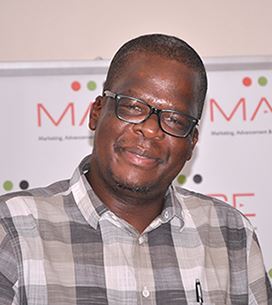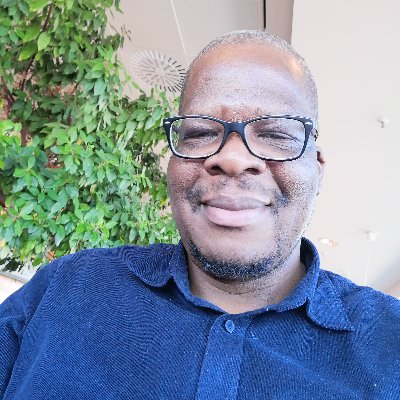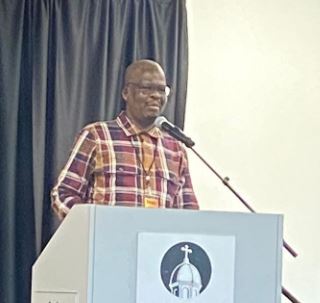By Toyin Falola
Anthropological insights into human activities in this jungle called the world have illuminated our understanding that the act of bravery, at some point in time, is demonstrated in an individual’s (or animal’s) ability to exert a destructive influence on the other forms of life that threaten their life and existence. This concept of bravery, coupled with knowledge, is particularly significant in the context of African intellectual history. From foraging in the wild to get maximum consumables and remain at the top of the food chain to facing daring ecological conditions that demand adaptive and coping strategies for survival, acts of bravery are demonstrated in different capacities based on the realities of the time.

Today, humans have successfully confronted these challenges, thanks to the emergence of strong individuals when the world needed them the most. Interestingly, in periods preceding “the age of reason,” these knowledgeable individuals were also considered brave, although they often received less recognition than their physically strong counterparts. However, every phase of the human journey requires the intelligence of such individuals to overcome its inherent challenges. In the current age, not only has it become an incredible mark of bravery to be knowledgeable, but it has also become a sole indicator of serious and uncompromising individuals.
While some people possess knowledge that could potentially save the world, it takes a special kind of courage to share this knowledge, especially when doing so might put one’s safety at risk. Fela Kuti’s poignant observation that many Africans shy away from confronting oppressive forces due to fear of death rings true. To be knowledgeable and to boldly speak the truth, regardless of the circumstances, is a mark of true bravery. It is a height that Fela believed was difficult for the average African to reach. Sabelo Ndlovu-Gatsheni, however, exemplifies this kind of bravery, inspiring others to follow suit.
Due to their adjacent position to the global power economy, academic institutions have become laboratories for intellectual experiments where ideas are manufactured and configured to satisfy preconceived desires. The African individual comes into such institutions, which are genealogically linked to Western epistemic foundations, and becomes Westernized or Europeanized to the extent that they lose their cultural identity as a matter of rational thought generation and self-awareness. The profound impact of these Western epistemic foundations on African identity is undeniable. Consequently, their thinking appears anti-African because the resources or their thinking are not extracted from their indigenous epistemic foundations. This leads to a civilization identity that alienates them completely from global calculations and misleads them to believe atrocious things about themselves.
As such, the average African who argues for the appropriation of most Western ideas in advancing their collective aspirations believes erroneously that these contributions are the best things to happen to the continent, not realizing they are merely expressing Western ideas and ideals through an African lens. Sabelo Ndlovu-Gatsheni recognized this early enough and deployed his intellectual arsenal to challenge the establishment, earning him the reputation of an intellectual warrior who is relentless and bold. His consistent efforts to reclaim the African mind from the encampment of its usurpers demonstrate his commitment to the collective emancipation of Black people. While he is not the first to undertake such a mission, it is reassuring to find such an illuminating mind in an age when the tendency to show confidence in this fight has continued to dwindle.

Before launching his intellectual crusade against the political complexities that have long dominated African leadership, Ndlovu-Gatsheni made remarkable efforts to confront African educational institutions, which have become leviathans that everyone is afraid of. Remarkably, his efforts are yielding incredible results. Ndlovu-Gatsheni launched himself into decades-long research engagements and has discovered that any true emancipation of Africans and Africa must begin by repositioning their epistemic values and traditions. He believes that repudiating the knowledge methods inscribed by Western ideologues is necessary and pivotal for delinking the African thought system from Western programming.
To become that vocal against a system inherited from racist imperialists can make an individual a target for attacks that will undermine their relevance, especially economic relevance. Historians would agree that individuals who verbally challenge institutions and establishments that exploit people’s resources–intellectual, social, political, economic and philosophical–often face the wrath of these establishments. Despite these risks, Sabelo remains unwavering in his determination to liberate the continent from the unseen hands holding Africa’s epistemic inheritance hostage, earning him the admiration of those committed to this emancipatory assignment.
When examining African universities, one might wonder if there are inferior intellectual resources there that have made it impossible to disengage the students’ thoughts from Westernized imaginations that make them perpetually loaded with self-hate. This intellectual of inestimable value has consistently argued that capitalists’ aspirations extend far beyond the commercialization of material resources. He predicted early on that capitalists are afflicted by insidious diseases that are difficult to cure. Their understanding that they could extend their corporate reach into people’s educational systems reveals their deep commitment to commercializing everything, including knowledge. The infiltration of capitalist ideology into the continent’s knowledge system has brought the people to a level where they cannot compete with others for several reasons.
Primarily, the commercialization of education has created a division among its consumers, where one group can afford it because of their better economic conditions, and others cannot, owing to poverty and indigence. Meanwhile, the privileged few who have access to education are themselves beneficiaries of the skewed systems that have operated on the continent for ages. To reach this level, it is apparent that the future of the continent is perpetually challenged by contemporary capitalist greed. Therefore, it is reassuring to see someone like Ndlovu-Gatsheni dedicating his energy and zeal to addressing this problem with the hope of genuinely bringing about true change for the African people.

Africa desperately needs the liberation that Sabelo advocates for, as that would eventually bring about the structuration of their political, social, economic, epistemic and philosophical identities in ways that are beneficial to the people. One remarkable aspect of his bravery is that he minces no words when addressing issues that he believes need immediate intervention. He is adept at connecting the dots that might seem obscure to others, an ingenious ability that highlights his intelligent mind. The fact that he articulates these connections without hesitation underscores his compelling qualities.
Global right-wing ideologues are critical of anything that obstructs their hegemonic politicking and will stop at nothing to achieve their goals. The proliferation of wars and the relentless pursuit of capitalist aspirations at the detriment of global peace and stability reveal how irredeemable their conscience is in the scheme of things. Their desperation is evident in their willingness to pursue their devious ambition, regardless of the detrimental impact on global peace. Meanwhile, they continue to enjoy tremendous support because many people are unaware of the connections between them and the numerous attacks occurring in different parts of the world. Ndlovu-Gatsheni serves as the conscience and the consciousness for a large population of the subalterns–those who are unassuming and unaware of the hegemon’s eroding power and its destructive escapades in the human world.
From real-life events to various unpopular places, these conservative groups have consistently challenged the fact that others can muster the confidence to call them out or stand up against their exploitative aspirations. They vehemently oppose anything that comes in the colour of freedom, to the extent that they demonized Negritude, attacked decolonization, and challenged any effort that could threaten their overlordship position. Nothing further proves the emancipatory potential of these movements, marked for destruction and despoilation, than the restless efforts of the hegemons to destroy them. They believe that global power dynamics should always favour them, to the detriment of numerous innocent people across the globe. They are quick to denounce others, attributing all manners of inconceivable and demeaning atrocities to them. Without confronting this mammoth of a monster through epistemic reorientation and reinvention, it will remain ultimately difficult, if not impossible, to achieve the emancipation of the African people.

In his academic trajectory, Ndlovu-Gatsheni has established himself as a tireless leader who continues to anchor the academic safety and political wellness of the continent through his mind-blowing engagements. He demonstrated the necessity of combating these problems starting from the university, the central power point where Africans can reclaim maximum intellectual resources to elevate themselves after liberation and freedom.
PS: This piece was composed at UNISA. I thank Stevens Mohapi for his care and affection.
Your exemplary work demonstrates remarkable potential. With strategic enhancements, this foundation can be transformed into a pioneering contribution that advances the field and solidifies your position as an industry authority.
Such moving words from the doyen of African Studies about Prof Sabelo Ndlovu-Gatsheni.
turbine balancing
Turbine Balancing: A Comprehensive Guide
Turbine balancing is a critical maintenance procedure that ensures the optimal operation of rotating machinery. It involves correcting the mass distribution within a rotor, effectively minimizing vibration and preventing mechanical failure. This guide delves into the process of dynamic shaft balancing, comparing static and dynamic balance, while detailing the step-by-step approach to achieving a balanced rotor using tools like the Balanset-1A.
Understanding Static vs. Dynamic Balance
Before diving into turbine balancing techniques, it is essential to understand the two categories of imbalance: static and dynamic. Static imbalance occurs when the rotor’s center of gravity is misaligned with its axis of rotation while stationary. This type of imbalance is effectively treated by adjusting mass at specific locations to align the center of gravity with the shaft’s axis. On the other hand, dynamic imbalance manifests during rotor operation. In this scenario, different mass distributions affect vibration more significantly since they occur in various planes. Dynamic balancing requires specialized techniques, taking into account the rotational dynamics that static balancing does not.
The Importance of Dynamic Shaft Balancing
Dynamic shaft balancing is imperative for ensuring the smooth operation of turbines and similar machinery. It significantly reduces vibrations that can lead to wear and tear, mechanical failures, and costly downtime. By using a device like the Balanset-1A, operators can achieve precision in balancing turbines, as the device can analyze vibration in two planes simultaneously, making it highly efficient for complex rotors.
Dynamic Balancing Process
The process begins with the initial measurement of vibrations. Here’s a breakdown of the steps involved in turbine balancing:
1. Initial Vibration Measurement
The rotor is mounted on the balancing machine, and vibration sensors are attached. The rotor is rotated, and the device collects baseline vibration data, highlighting any existing imbalance.
2. Installation of Calibration Weights
To understand how to address imbalances, a known calibration weight is added to one side of the rotor. Rotating the rotor again allows the system to register any changes in vibration due to the added weight. This provides vital information about the rotor’s behavior under modified conditions.
3. Adjusting Weight Positions
After measuring the changes caused by the calibration weight, it’s moved to another location, and vibrations are measured again. This reveals the rotor’s response to different weight distributions, enabling the technicians to gauge how to effectively balance it.
4. Installation of Final Weights
Upon analysis of the vibration data collected from different iterations, the required corrective weights are calculated. Weights are then installed at predetermined positions to counteract the identified imbalances. A final rotation tests the effectiveness of these corrective measures, ideally resulting in significantly reduced vibrations.
Angle Measurement for Corrective Weight Installation
Precise measurements are crucial in the turbine balancing process. Measuring the angle at which corrective weights should be installed ensures that the adjustments made will effectively counterbalance the rotor’s imbalances. This involves determining the direction of rotation and measuring from the point of calibration weight installation.
Practical Applications in the Industry
Turbine balancing isn’t limited to turbines alone; the techniques and tools used in this process are applicable across various industries and types of machinery. Equipment like crushers, fans, and centrifuges also benefit from dynamic balancing, ensuring their longevity and reliability.
Conclusion
In conclusion, turbine balancing is a vital procedure that enhances the performance and lifespan of rotating machinery. By employing effective techniques and tools like the Balanset-1A, industries can maintain optimal operational efficiency, reduce the risk of mechanical failures, and minimize downtime caused by vibration-related issues. Understanding both static and dynamic balance, alongside mastering the balancing process, ensures that equipment runs smoothly, setting the foundation for enhanced productivity and reduced operational costs.